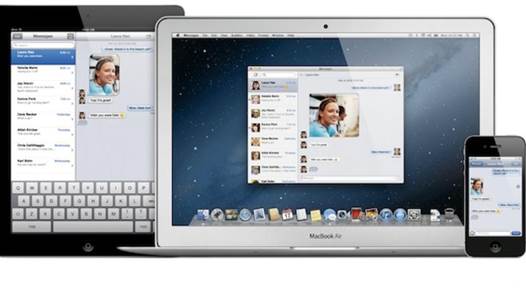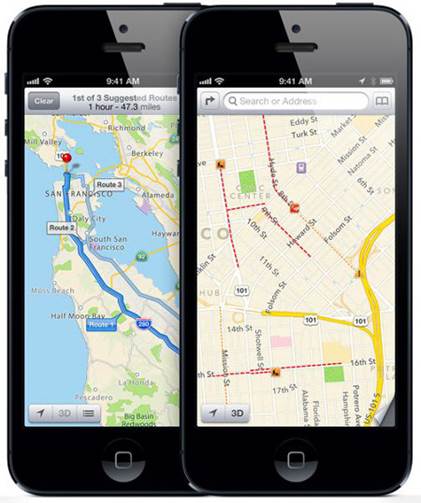How much of the Jony I. influence
will OS X see in 2013?
For Apple, 2013 will be big. The advantage
of Apple products till now was because of the complete package – the hardware
and software is neatly optimized. Some criticized the closed ecosystem, but the
tight leash Apple has on both aspects translates to performance. The idea seems
to be fairly simple bring the desktop and the smartphone OS as close to each
other as possible. The reason is two-pronged: collaboration and consistency. But
with rivals trying even harder, the gap between competitors is surely closing.
To be honest, Apple after Steve Jobs just hasn’t been able to wow users as they
used to be able to, and the Cupertino wizards desperately need something to set
the bar high again. They still make good products, but none of them path breaking.

How
much of the Jony I. influence will OS X see in 2013?
The future of OS X?
Some say that the best job in the world is
to be a Porsche designers. They have 3 models, all of them similar, and they
hardly ever change anything notice-able, except under the hood, but that’s
engineering, not design. Similarly, Apple seems to have taken a similar
approach for OSes. “Timeless brilliance”, some may say, or “if it’s not broken,
why fix it?”
The year 2012 saw the Mountain Lion OS X
update – Lion’s successor. Lion was touted to be a genuine successor to Snow
Leopard, however, it seems Mountain Lion is the real successor, as it actually
implements the idea of Lion. So what was this idea? Put simply, bring the
desktop and the smartphone OS closer.

The
year 2012 saw the Mountain Lion OS X update – Lion’s successor
First up, the Launchpad is the iOS style
application menu on the desktop. With Mountain Lion, there is the notification
bar, just as you would have on a phone. Facebook and Twitter integration
followed, joining the likes of Vimeo and Flickr on the OS X platform. While
this may not look like much, the ability to send a status update or tweet a
photograph like you would on a phone just makes the desktop OS feel closer to
the sweet spot. Game Centre is another application that made its way over from
iOS devices to create a complete ecosystem of seamless gaming, at least for the
titles that support it. Voice commands and typing – Dictation is now available
for multiple apps, including the popular office suites.
The biggest update was iCloud, that let you
sync contacts, documents, mails etc. between your devices – the Mac, the iPhone
and the iPad. The syncing is instant. You can create a document on Pages on
your MacBook and edit it on Pages on the iPad on the train ride back home.
Scribble a Note for later, and it’ll be there on your other devices as well. If
you happen to misplace one of the devices, Find My Mac and Find My Phone will
do the finding via the iCloud web site. Not everything is perfect though. One
thing that perplexes everyone is that the same operating system update works
brilliantly on one MacBook, while others with the exact same generation machine
will report slower performance, poor battery life and other compatibility
issues. This holds true for the last two OS refreshes Lion and Mountain Lion
which is worrisome!
It’s not just the older generation hardware
that faces issues either, but even spanking new Macbooks report the same niggles.
Not something one would expect from Apple, especially since their closed and
complete control over the hardware and software is what’s supposed to make
their products good to begin with!
Welcoming 2013
The critical bit just two words Jonathan I.
He is the person responsible for what the iPhone, the iPods, the iPad and the
MacBooks have looked like, for quite a few years now. His bio on Apple’s
website reads, “In 2003, he was named Designer of the Year by the Design Museum
London and awarded the title Royal Designer for Industry by The Royal Society
of Arts.” Why we are talking about Jonathan Ive, Senior Vice President,
Industrial Design is because he now has taken charge of the software side of
things as well. The next version of the desktop and the mobile operating
systems will surely bear the hallmark of the man who takes great pains in
ensuring that the final offering is visually appealing. It is safe to say that
iOS 7 and Mac OS X 10.9 might be significantly different from their current
avatars.
Apple’s thinking is straightforward – Jony
I. has been doing a fairly remarkable job churning out one good-looking device
after the other. With Forstall’s departure, it only makes sense that the person
making the amazing hardware should have a say in how the next versions of the
iOS and the OS X look. The feature set will be dictated by various factors, but
when it comes down to the crux of it, presentation will be key. The current
look of the OS X has been relatively similar (Porsche-style?) over the last couple
of iterations. A major change may not be warranted, but some streamlining and
tweaks are necessary. For example, Launchpad is still not an integral part of
the entire experience of using a Mac-Book. It is all well and good to bring the
OS closer, at least visually, but better deployment is needed.
SIRI on the Mac
Dictation and Speech are already a part of
OS X Mountain Lion, and it would only be logical for SIRI to arrive next, since
this is the expansion of the already prevalent feature. It is a server-based
application, and deploying it on another platform will not involve too many
complications. While this will excite a lot of Mac users globally, we don’t
think it makes any sense for Indian buyers, primarily because SIRI refuses to
understand our accent, and also because it isn’t fun screaming at your laptop
to get it to undo things that you didn’t ask it to do in the first place!
Maps
Sources seem pretty certain that the Maps
will also arrive on the desktop platform in 2013. There will be two ways of
doing it – a dedicated Maps app with OS X that will allow access to third party
apps as well, and a browser based service much like Google and Bing maps.
However, what Apple needs to do (and surely they will admit this internally
within the organization) is sort out the maps mess they have managed to create.
The current embarrassment cannot continue, and a complete overall needs to be
done. Expect important announcements in the first quarter of 2013. What will
not see a major change is the overall look and feel of the operating system.
Yes, there will be tweaks to make it look better and possibly more functional,
but the Jony I. effect will probably be more visible on the iOS than on the OS
X, at least in the next update.

A
dedicated Maps app with OS X that will allow access to third party apps as
well, and a browser based service much like Google and Bing maps
Don’t forget the hardware!
Talk about what to expect from Apple in
2013, and not talk about the hardware is just wrong! And we would not let you
go through that incomplete journey. Here is what we think will happen on the
hardware front with the Macs.
Retina Display
First up, the Retina display. This arrived
on the MacBook Pro in the latest refresh, and now it is the turn of the MacBook
Air. It will be interesting to see if Apple retains the dual range of the
MacBook Air – one with the Retina display and one without. This is currently
happening with the MacBook Pro range. Pricing will see the new 11-inch and
13-inch non-Retina Air versions to be priced similar to the current prices,
with the Retina versions getting the “top of the line” tag.
Thinner MacBooks
What is pretty much confirmed is that the
next edition of the Air and the Pro will be even thinner than the current one.
If you thought that was not possible, particularly in the case of the Air,
think again. Apple is working on tweaking the keyboard backlighting to get the
desired effect. According to some reports, a thinner set of LEDs is to be
deployed. Others suggest that Apple will reduce the amount of backlighting to
get the current thickness of 0.40mm down to 0.25mm on the new Air.
Intel Haswell
Intel’s Haswell processors will also make
their way into the next generation of MacBooks. While the new range retains the
22nm process seen with the current Ivy Bridge range, a newer architecture will
mean better performance. According to the recent leaks, the Haswell range has
only one dual core Core i5 processor, while the other entire Core i5 and Core
i7 range is quad core. Coupled with more RAM and an SSD in some models,
performance will be rather delightful.
Tim Cook had said back in June 2012 that
“something really great” is coming for Pro users in 2013. Our ears still ring
with those words, as we wait in anticipation and expectation. For the rest of
the range, we expect similar great stuff.